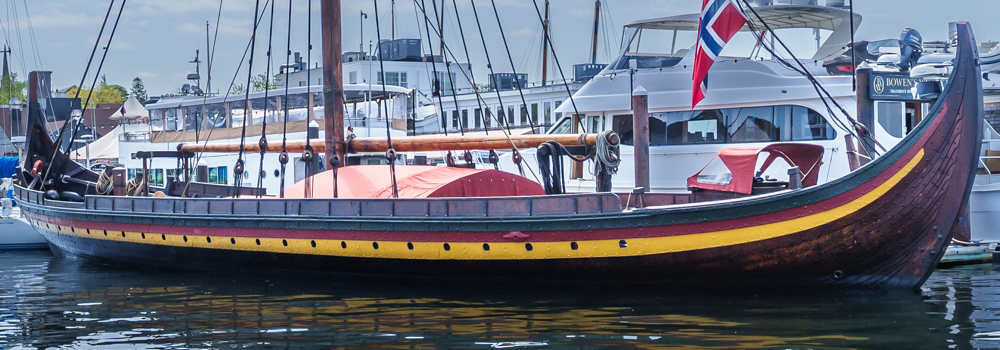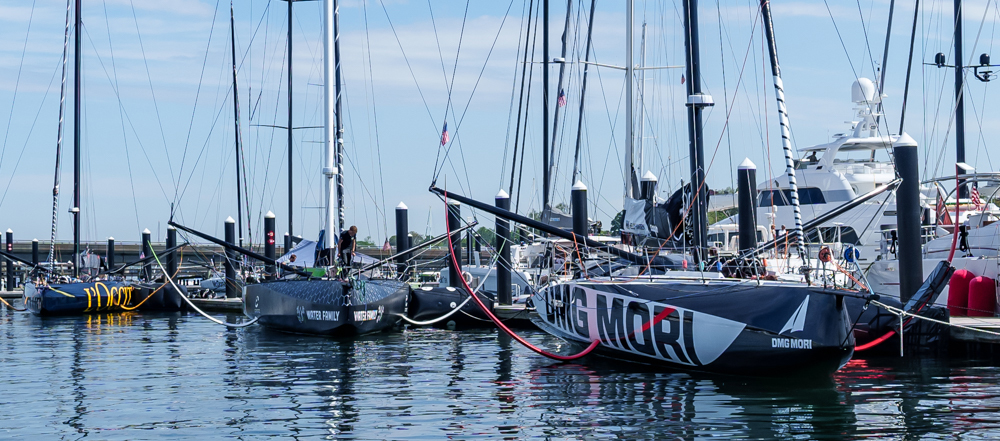Last week, we enjoyed a Newport Harbor tour that provided even more amazing boat-gawking contrasts than usual—despite the unexpected pre-summer emptiness. For those of you reading from somewhere else, spring here in New England has been quite soggy; very bad for both boat prep and actual boating. As a result, most moorings were empty; a rare sight in Newport.
A year ago, I shared with you the variety of sailing I get to do myself, but on this cruise I was perfectly happy to admire the highlights from afar. After a turn through Brenton Cove past a few cruising boats I’ve written about, we headed for the inner harbor’s dock-smorgasboard: power and sail, modern and classic. We even spotted Hound, though her elegant profile was mostly hidden behind a (not-elegant) motoryacht.
It was at Bowen’s Wharf where the variety dial pegged itself at 10.

Draken, a Norwegian Viking ship replica, is 115 feet long and billed as “the world’s largest Viking ship sailing in modern times.” In April 2016 she sailed across the Atlantic, retracing Leif Erikson’s voyage to the Canadian Maritimes. She arrived in Newfoundland on 1 June, headed to the Great Lakes for a summer of Tall Ships festivals, and then unstepped her tree-trunk of a mast to transit the New York canal system down to Mystic Seaport. Now she’s heading home again—this time, traveling on the deck of a Dutch cargo ship.

Next stop on the harbor tour was Newport Shipyard, where several IMOCA shore teams were prepping for a race back to France. They all sport foils now, which is why the sprint from Brittany to New York took the leading crews just over a week—and why their singlehanded return might be even quicker. It is the final chance to qualify for the 2024 Vendée Globe, a singlehanded race around the world.

Draken will likely beat all of the IMOCAs back to Europe, but only because she is not under her own single-sailed power. Sailboat design has certainly come a long, long way since the Viking days—though perhaps at some sacrifice to dockability.
Happy (almost) summer! Have you made it out on the water yet? Share your highlights in the comments below, or send me an email. I read every single one, with gratitude.